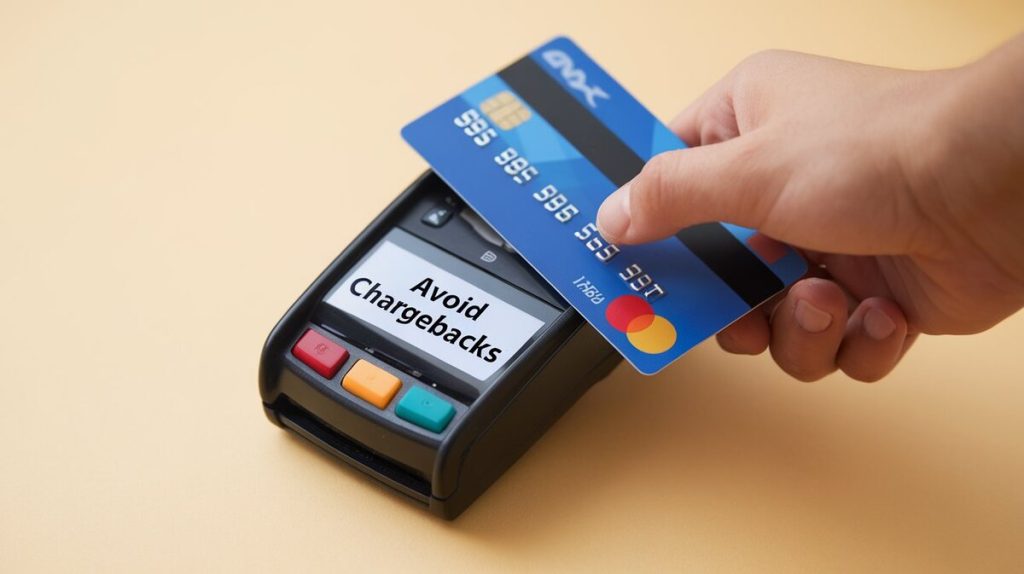Introduction
Chargebacks are a major issue for businesses, particularly in eCommerce. In 2023, businesses worldwide lost over $125 billion due to chargebacks. Chargebacks result in more than just lost sales—they lead to penalties, fees, and reputational damage, making them a significant concern.
Understanding chargebacks and implementing effective prevention strategies can save businesses substantial amounts of money and time. This article outlines key strategies for preventing chargebacks, backed by concrete data and proven solutions.
Types of Chargeback Fraud
Chargebacks generally fall into three categories:
- True Fraud: Fraudulent use of stolen cards or account credentials.
- Merchant Errors: Mistakes such as double billing, unauthorized charges, or unclear product descriptions.
- Friendly Fraud: Legitimate customers dispute transactions, often claiming non-receipt of items or dissatisfaction, despite having received what was ordered.
Table 1: Breakdown of Chargeback Types
| Type of Chargeback | % of Total Cases | Average Cost per Case |
|---|---|---|
| True Fraud | 40% | $240 |
| Merchant Errors | 20% | $150 |
| Friendly Fraud | 40% | $125 |
Key Fraud Prevention Strategies
Chargeback prevention requires a combination of verification methods and fraud detection tools. Common strategies include:
- Address Verification Service (AVS) and CVV Checks: These are simple yet effective ways to verify that the customer’s billing address and card details match the issuing bank’s records.
- 3D Secure 2.0: This protocol helps authenticate cardholders and reduces liability for fraud-related chargebacks by shifting it from the merchant to the issuing bank.

Advanced Fraud Detection Tools
Machine learning and AI-based systems are crucial in identifying and preventing fraudulent transactions before they result in chargebacks. These systems analyze transaction data to detect suspicious patterns, such as multiple high-value transactions from a single IP address.
Merchants that integrate Merchanto.org, a Visa and Mastercard partner specializing in chargeback prevention, report up to a 30% reduction in chargeback rates. For more details on these solutions, visit Merchanto.org.
Table 2: Comparison of Fraud Prevention Tools
| Tool | Accuracy | Cost per Transaction | Networks Supported |
|---|---|---|---|
| AVS & CVV Checks | 85% | $0.02 | Visa, Mastercard |
| 3D Secure 2.0 | 90% | $0.03 | Visa, Mastercard |
| AI-Based Fraud Detection | 95% | $0.05 | Visa, Mastercard |
Reducing Legitimate Chargebacks
Many chargebacks occur due to genuine issues such as billing mistakes or customer dissatisfaction. To minimize these:
- Clear Return Policies: Ensure refund policies are easy to understand. According to Visa’s guidelines, transparent policies reduce customer disputes by 20%.
- Accurate Product Descriptions: Inaccurate descriptions and misleading images lead to dissatisfaction and chargebacks. Precise product details help reduce this risk.
- Proactive Customer Service: Resolving customer complaints before they escalate can prevent chargebacks. Mastercard data shows 60% of disputes could have been avoided with timely customer service intervention.
Table 3: Strategies to Reduce Chargebacks
| Strategy | Expected Reduction in Chargebacks |
|---|---|
| Clear Return Policy | 15% |
| Accurate Product Descriptions | 12% |
| Proactive Customer Service | 20% |
Disputing Illegitimate Chargebacks
When merchants face illegitimate chargebacks, it’s essential to respond with solid evidence. The chargeback representment process involves submitting proof (such as transaction details and shipping records) to the issuing bank. Merchants who provide compelling evidence can reverse up to 45% of these chargebacks, according to Mastercard.
Steps to Dispute Chargebacks:
- Document Transactions: Keep detailed records of invoices, shipping confirmations, and communications with customers.
- Meet Deadlines: Typically, merchants have 20-30 days to dispute a chargeback. Missing this deadline results in an automatic loss.
- Provide Evidence: Submitting clear evidence, such as proof of delivery or customer consent, strengthens the merchant’s case.
Mastercard and Visa both emphasize the importance of addressing chargebacks quickly to maximize the chances of reversal.

Advanced Fraud Prevention Tools
Merchants should consider advanced tools like tokenization and Know Your Customer (KYC) verification to protect against chargebacks. Tokenization ensures sensitive card data is never exposed by replacing it with a secure, randomly generated token. KYC verification helps prevent account takeovers by requiring users to verify their identity before completing transactions.
Many payment processors, such as Stripe and Braintree, offer these tools as part of their services. Visa’s official guidelines also recommend using KYC to prevent fraud.
Conclusion
Chargebacks are a costly problem, but businesses can reduce their impact with the right strategies. Implementing fraud prevention tools, clear policies, and strong customer service can significantly reduce chargebacks. Working with partners gives businesses access to tools that can cut chargeback rates and protect revenue.
Key Takeaways for Chargeback Prevention
| Area | Actionable Step | Impact on Chargebacks |
|---|---|---|
| Fraud Detection | Use AVS, CVV, 3D Secure | Reduces fraud by 30% |
| Transaction Monitoring | Implement AI fraud detection systems | Cuts fraudulent attempts by 30% |
| Clear Communication | Transparent policies and product descriptions | Lowers disputes by 15-20% |
| Dispute Management | Respond to chargebacks with solid evidence | Win 45% of disputes |
By following these guidelines, businesses can reduce chargebacks, saving time and money while securing more reliable transaction processes.
Sources: Visa, Mastercard, Stripe, Braintree, Checkout.com



